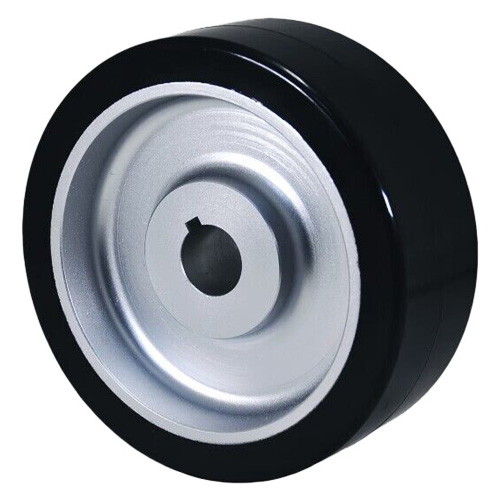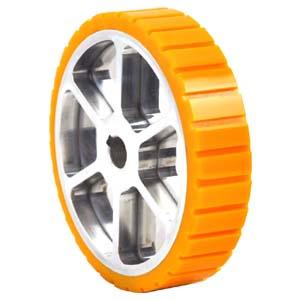How to select PU AGV driving wheels and rubber driving wheels
When considering the selection of AGV driving wheels for Automated Guided Vehicles (AGVs), two common materials that come to mind are Polyurethane (PU) and rubber. Both materials have their own unique properties and advantages, and understanding the differences between PU AGV driving wheels and rubber AGV driving wheels is crucial for making an informed decision. In this comprehensive analysis, we will delve into the various aspects such as material properties,performance characteristics, application suitability, and maintenance requirements for both PU and rubber AGV driving wheels.
Material Properties:
Polyurethane (PU):
Polyurethane is a versatile synthetic material that is known for its exceptional wear resistance, high load-bearing capacity, and good elasticity. PU possesses a high coefficient of friction, providing excellent traction on different surfaces, and it maintains its properties over a wide range of temperatures. Additionally, PU exhibits resistance to chemicals, oils, and solvents, making it suitable for deployment in challenging industrial environments.
Rubber:
Rubber is a natural or synthetic elastomer that offers good shock absorption, low rolling resistance, and high traction. It provides excellent grip on smooth and rough surfaces and is renowned for its durability and long service life.
However, rubber is susceptible to wear and tear, which can impact its performance over time, especially in demanding operational settings.
Performance Characteristics:
Polyurethane (PU):
PU AGV driving wheels are known for their exceptional durability and ability to withstand continuous use without deformation or cracking. They offer a high level of load-bearing capacity, making them ideal for heavy-duty applications. The high coefficient of friction of PU driving wheels ensures enhanced traction, contributing to efficient and reliable AGV operation. Furthermore, PU driving wheels are resistant to abrasion, tearing, and chunking, ensuring longevity and consistent performance.

Rubber:
Rubber driving wheels are valued for their shock-absorbing capabilities, which help reduce vibration and noise during AGV operation. Their high traction and grip make them suitable for a wide range of surfaces, providing stability and maneuverability. However, the wear resistance of rubber may be lower compared to PU, and it may be more susceptible to damage when exposed to harsh chemicals and solvents.
Application Suitability:
Polyurethane (PU):
PU AGV driving wheels are well-suited for heavy-duty applications where high load-bearing capacity, wear resistance, and traction are essential. They are commonly used in industries such as automotive manufacturing, logistics, and warehousing, where AGVs operate in demanding and rigorous environments.
Rubber:
Rubber AGV driving wheels are suitable for various applications where shock absorption, traction, and grip are critical factors. While they may not offer the same level of wear resistance as PU, they are widely utilized in industries such as food and beverage, pharmaceuticals, and general material handling, where AGVs navigate diverse surface conditions and require minimal noise output.
Maintenance Requirements:
Polyurethane (PU):
PU driving wheels generally require minimal maintenance due to their high resistance to wear and tear. Regular cleaning to remove debris and dirt buildup is recommended to ensure optimal traction and performance. Additionally, checking for any signs of wear or damage should be part of routine maintenance to prevent potential issues during operation.
Rubber:
Rubber driving wheels may require more frequent inspection and maintenance due to their susceptibility to wear. Regular cleaning is essential to prevent the accumulation of foreign materials that could affect traction and grip.Monitoring for signs of wear, tear, or degradation is important, and timely replacement of worn-out rubber driving wheels is necessary to maintain AGV performance.
Conclusion:
In conclusion, both PU and rubber AGV driving wheels offer distinct advantages and are suitable for different AGV applications based on their specific material properties and performance characteristics. PU driving wheels excel in heavy-duty applications, providing exceptional wear resistance, load-bearing capacity, and traction, while rubber driving wheels offer excellent shock absorption, traction, and grip across diverse surface conditions. Understanding the differences between these materials is crucial for selecting the most appropriate AGV driving wheels that align with the operational requirements and environmental challenges of AGVs in various industries.



 English
English Spanish
Spanish German
German Russian
Russian Arabic
Arabic Portuguese
Portuguese Italian
Italian French
French Hebrew
Hebrew Turkish
Turkish